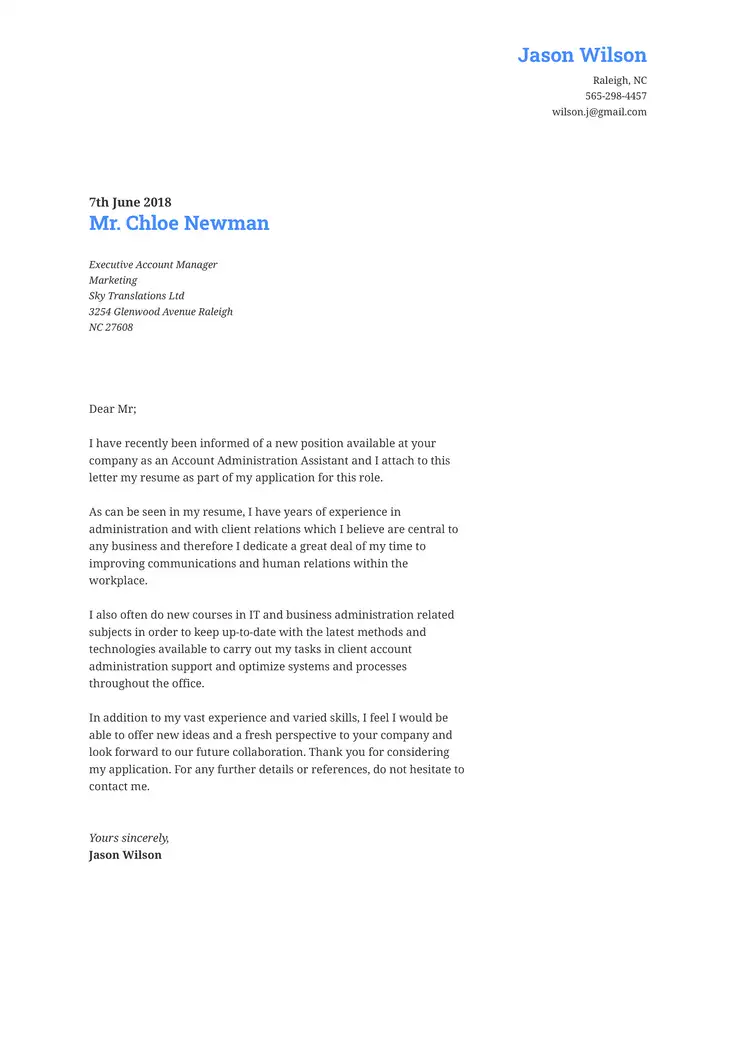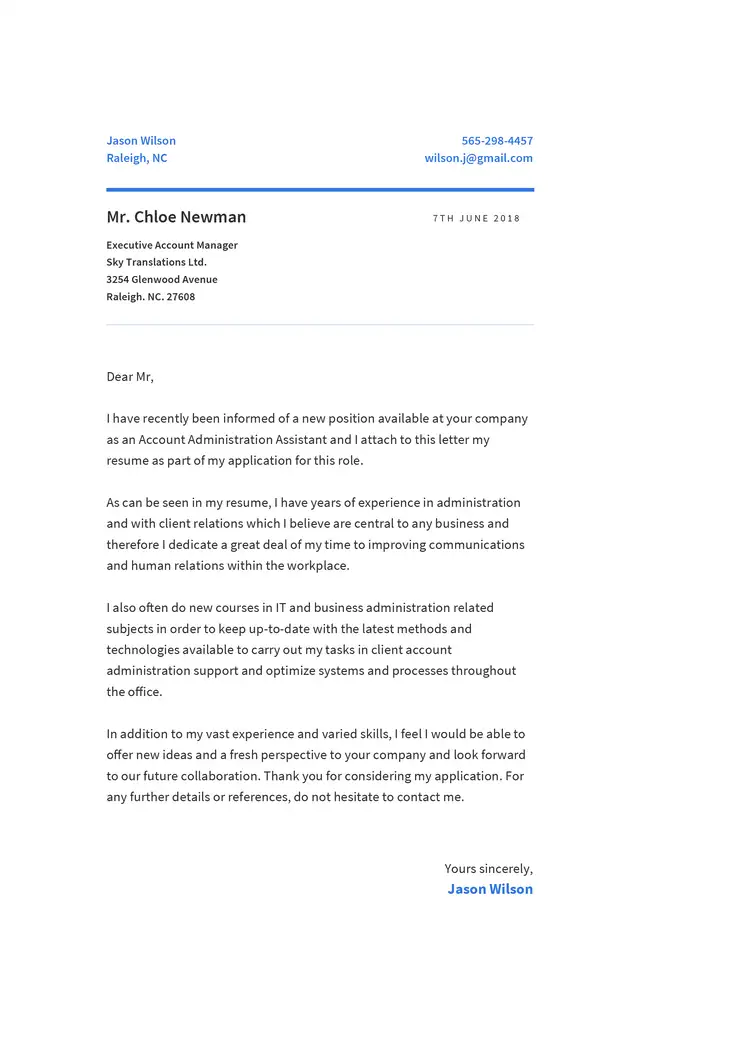Cover Letter Format
Get the best structure for a winning cover letter

Often, in the world of job searching and resume writing, people are told how important it is to make a good first impression. But job seekers often overlook the significance of a well-structured, easy-to-read and relevant cover letter format as part of this first impression.
When you prepare for a job interview, you spend time and energy deciding what to wear and how to style your hair, and you make sure to arrive on time. All these aspects contribute to your appearance and how you are first perceived by the potential employer.
So it is absolutely necessary to dedicate that same amount of time and effort, if not more, to producing an effective, well-formatted cover letter and resume. Or if you are in a hurry, you can let ResumeCoach’s easy-to-use AI cover letter generator aid you.
An effective cover letter layout convinces a hiring manager to put your application on the shortlist, even if your resume doesn’t entirely fit their needs, if you know how to market your transferable skills and achievements that relate to the vacancy.
This is why it is crucial for all candidates, whether looking for a first job or taking the next step up the career ladder, to learn how to write a cover letter, and the best job application letter format to get them noticed.
How to format/layout a cover letter
Just as there are different formats for resumes such as the chronological, functional and combination resumes, there is a certain style guide that should be considered when deciding on the correct cover letter format for a job application.
Let’s take a look at a cover letter layout example for the beginning of the document.
- The beginning of a cover letter should include a header with the candidate’s full name and contact details.
- The contact details should include the applicant’s telephone and email address but it is not a requirement to put a full physical address.
- You should date the letter and remember always to change this when adapting your cover letter for new vacancies.
- Below this information, candidates should then list the name and title of the recipient, in this case the hiring manager, as well as the company address.
- Address the recipient, using ‘Dear + first name’ or ‘Mr./Mrs. + surname’ or simply ‘(company Hiring Manager’ ).
Next, you will want to carefully craft your introductory paragraph. You can find full details about the best cover letter format for this paragraph in our guide to starting a cover letter.
Crafting a good finale and signing off on your cover letter layout is crucial in order to leave the audience wanting to know more and planning on contacting you. You can read more about this in our expert advice on how to end a cover letter.
Cover Letter Format Advice
Now for the more technical part of job application letter formatting and some general considerations for job seekers working on their first cover letter layout or improving an existing one.
- Ensure to use a letter sheet and do not exceed this length.
- Maintain left alignment throughout except in the case of headers or personal contact information, which can either be centralized or in a right-hand column.
- The cover letter spacing should be Simple or 1,5 at most. There is little space on just one letter sheet to create a cover letter that includes everything you want to say to a hiring manager to convince them to take a closer look at your candidacy so although the wording is limited to 300 words maximum, it is advisable not to space out the text too much.
- Cover letter font should never be a ‘fun’ font. All applicants should use a professional font on their cover letter such as Arial, Calibri or Times New Roman. The size of the font should be no smaller than 11 as it can become illegible but should also not be so big as to look unprofessional.
- All cover letter margins should be approximately 0.6”-1” and neither larger, nor smaller.
- In all documents candidates should include the cover letter date and remember always to update it when making changes or sending a new job application. In email cover letters it is not necessary to include the date.
For email cover letter formats , there is no need to add a header or to include the address of the company. You should however, include your personal contact details in your professional signature in email cover letters.
Other cover letter layout considerations
Before we wrap up this guide, let’s look at some other things that can make the best cover letter format stand out above the pack.
In the main sections of a professional cover letter, similar to a resume work experience section, you can use lists or enumerate achievements. The act of including facts and figures in a cover letter is seldom used by jobseekers but is a sure-fire way to attract attention from the potential employer.
Cover letter bullet points can even be used to give a structure to elements that are significant to the candidacy. This allows you to add more key points that you might otherwise not be able to detail.
As with a professional resume, jobseekers should ensure they include cover letter keywords and expressions taken from the job description or company website, throughout the document.
In some cover letter formats, candidates choose to include a cover letter table where they introduce the requirements or needs of the business/position in question. They then add a corresponding column indicating how they as applicants fulfill these needs, using examples of previous accomplishments, experience and training.
Jobseekers can use this formatting advice to create an effective cover letter from scratch but remember that we also have plenty of and cover letter examples available which allow applicants to use as a base they can then personalize!

